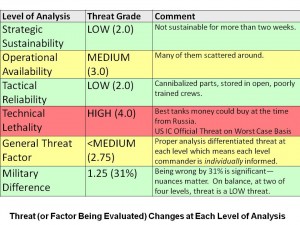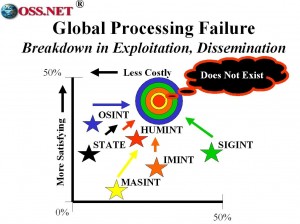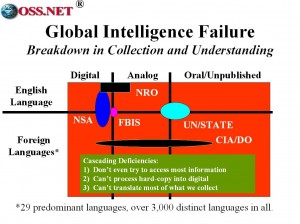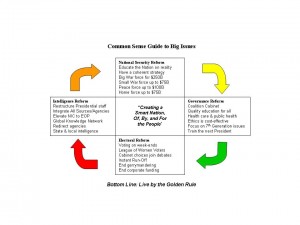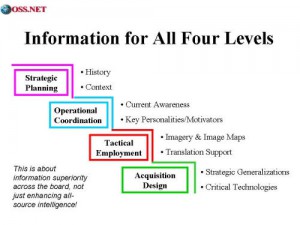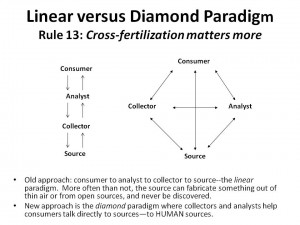
First presented in Canada in 1994, this was the first depiction of how out-of-date the existing government intelligence communities are. They are hierarchical Weberian stove-pipes out of touch with reality and anyone who is actually steeped in reality.
The old intelligence paradigm is on the left–a very controlled hierarchical stovepipe process that is best characterized as twelve-month planning cycles followed by three-month writing cycles and eighteen-month editing cycles. Most of what we produce is too late, not right, and not useful.
The new intelligence paradigm makes the acme of skill “knowing who knows” (with a tip of the hat to Stevan Dedijer) and the ability to put a consumer with a question in touch with a source (or multiple sources) who can create new tailored knowledge in the instant.

